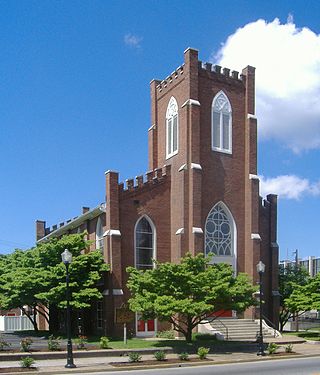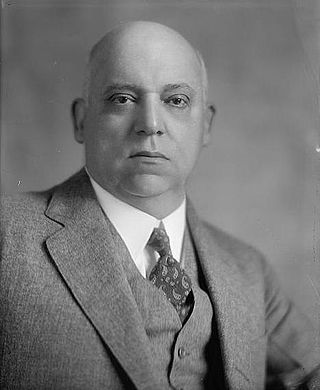
Logan County is a county in the southwest Pennyroyal Plateau area of the U.S. Commonwealth of Kentucky. As of the 2020 census, the population was 27,432. Its county seat is Russellville.

Caldwell County is a county located in the U.S. state of Kentucky. As of the 2020 census, the population was 12,649. Its county seat is Princeton. The county was formed in 1809 from Livingston County, Kentucky and named for John Caldwell, who participated in the George Rogers Clark Indian Campaign of 1786 and was the second lieutenant governor of Kentucky. Caldwell was a prohibition or dry county until 2013, when the citizens voted to lift the ban.

Princeton is a home rule-class city in Caldwell County, Kentucky, in the United States. It is the seat of its county. The population was 6,329 during the 2010 U.S. Census. Princeton is home to several notable attractions such as Adsmore Museum, Champion-Shepherdson House, University of Kentucky Research and Education Center Botanical Garden, Capitol Cinemas, the Annual Black Patch Festival, and Newsom's Aged Kentucky Ham.

Hopkinsville is a home rule-class city in and the county seat of Christian County, Kentucky, United States. The population at the 2020 census was 31,180.
The Agricultural Wheel was a cooperative alliance of farmers in the United States. It was established in 1882 in Arkansas. A major founding organizers of the Agricultural Wheel was W. W. Tedford, an Arkansas farmer and school teacher. Like similar farmer organizations such as the Southern Farmers' Alliance, the Louisiana Farmers' Union, and the Brothers of Freedom, the Agricultural Wheel had been formed to expose and correct the injustices and oppressions done to the small farmers by merchants, grain elevators and the railroads. The Wheel promoted a radical agenda including currency expansion through free silver; closing all national banks; regulation or nationalization of the railroads, the telephones and the telegraph; allow only Americans to purchase public lands; impose an income tax on high incomes; and elect senators by popular election instead of by state legislatures. The Wheel encouraged farmers to join local cooperatives, avoid the debt cycle, and avoid one crop overemphasis on cotton.
The Black Patch Tobacco Wars were a period of civil unrest and violence in the western counties of the U.S. states of Kentucky and Tennessee at the turn of the 20th century, circa 1904–1909. The so-called "Black Patch" consists of about 30 counties in southwestern Kentucky and northwestern Tennessee. During that period this area was the leading worldwide supplier of dark fired tobacco. It was so named for the wood smoke and fire-curing process which it undergoes after harvest. This type of tobacco is used primarily in snuff, chewing and pipe tobacco.

The history of agriculture in the United States covers the period from the first English settlers to the present day. In Colonial America, agriculture was the primary livelihood for 90% of the population, and most towns were shipping points for the export of agricultural products. Most farms were geared toward subsistence production for family use. The rapid growth of population and the expansion of the frontier opened up large numbers of new farms, and clearing the land was a major preoccupation of farmers. After 1800, cotton became the chief crop in southern plantations, and the chief American export. After 1840, industrialization and urbanization opened up lucrative domestic markets. The number of farms grew from 1.4 million in 1850, to 4.0 million in 1880, and 6.4 million in 1910; then started to fall, dropping to 5.6 million in 1950 and 2.2 million in 2008.
Sango is an unincorporated community in the southeastern corner of Montgomery County, Tennessee, about 5 miles east of Clarksville. It is located near Interstate 24, 30 minutes northwest of Nashville.

Augustus Owsley Stanley I was an American politician from Kentucky. A member of the Democratic Party, he served as the 38th governor of Kentucky and also represented the state in both the U.S. House of Representatives and the U.S. Senate. From 1903 to 1915, Stanley represented Kentucky's 2nd congressional district in the House of Representatives, where he gained a reputation as a progressive reformer. Beginning in 1904, he called for an antitrust investigation of the American Tobacco Company, claiming they were a monopsony that drove down prices for the tobacco farmers of his district. As a result of his investigation, the Supreme Court of the United States ordered the breakup of the American Tobacco Company in 1911. Stanley also chaired a committee that conducted an antitrust investigation of U.S. Steel, which brought him national acclaim. Many of his ideas were incorporated into the Clayton Antitrust Act.

Port Royal is an unincorporated community on the border of Montgomery and Robertson counties, Tennessee. It is home to Port Royal State Park and is located at the confluence of the Red River and Sulphur Fork Creek.

Augustus Everett Willson was an American politician and the 36th Governor of Kentucky. Orphaned at the age of twelve, Willson went to live with relatives in New England. This move exposed him to such authors as Ralph Waldo Emerson, Henry Wadsworth Longfellow, Oliver Wendell Holmes, and James Russell Lowell, who were associates of his older brother, poet Forceythe Willson. He was also afforded the opportunity to attend Harvard University, where he earned an A.B. in 1869 and an A.M. in 1872. After graduation, he secured a position at the law firm of future Supreme Court justice John Marshall Harlan. Willson and Harlan became lifelong friends, and Willson's association with Harlan deepened his support of the Republican Party.

This article contains a list of tobacco cultivars and varieties, as well as unique preparations of the tobacco leaf involving particular methods of processing the plant.
The Planters' Protective Association (1904–1908) was an agrarian organization formed in the Kentucky and Tennessee "Black Patch" dedicated to fair business and the protection of farmers' economic interests in light of the market dominance of the American Tobacco Company.
Captain Newton Jasper Wilburn was a Kentucky National Guard officer who played a crucial part in ending the Black Patch Tobacco Wars, the most sustained and violent civil uprising in America since the Civil War.

Tobacco cultivation and exports formed an essential component of the American colonial economy. It was distinct from rice, wheat, cotton and other cash crops in terms of agricultural demands, trade, slave labor, and plantation culture. Many influential American revolutionaries, including Thomas Jefferson and George Washington, owned tobacco plantations, and were hurt by debt to British tobacco merchants shortly before the American Revolution. For the later period see History of commercial tobacco in the United States.
The Native Tobacco Board, or NTB, was formed in Nyasaland in 1926 as a Government-sponsored body with the primary aim of controlling the production of tobacco by African smallholders and generating revenues for the government, and the secondary aim of increasing the volume and quality of tobacco exports. At the time of its formation, much of Nyasaland's tobacco was produced on European-owned estates, whose owners demanded protection against African tobacco production that might compete with their own, and against the possibility that profitable smallholder farming would draw cheap African labour away from their estates. From around 1940, the aim of the NTB was less about restricting African tobacco production and more about generating governmental revenues, supposedly for development but still involving the diversion of resources away from smallholder farming. In 1956, the activities, powers and duties of what had by then been renamed the African Tobacco Board were transferred to the Agricultural Production and Marketing Board, which had powers to buy smallholder surpluses of tobacco, maize, cotton and other crops, but whose producer prices continued to be biased against peasant producers.
The lynching of the Walker family took place near Hickman, Fulton County, Kentucky, on October 3, 1908, at the hands of about fifty masked Night Riders. David Walker was a landowner, with a 21.5-acre (8.7 ha) farm. The entire family of seven African Americans including parents, infant in arms, and four children were killed, with the event reported by national newspapers. Governor Augustus E. Willson of Kentucky strongly condemned the murders and promised a reward for information leading to prosecution. No one was ever prosecuted.
David Amoss was a leader of the Night Riders, a vigilante group of Western Kentucky and Middle Tennessee farmers that was an offshoot of the Planters' Protective Association (PPA). The Night Riders were involved in a series of raids that made up the Black Patch Tobacco Wars across Kentucky and Tennessee from 1904–1909, mainly destroying large tobacco companies' warehouses because the farmers believed their prices were unfair. In 1910, he was put on trial for his leadership role in the Hopkinsville, Kentucky, raid of 1907.

Samuel Wilber Hager was an American politician who served as the 14th Kentucky State Treasurer from 1900 to 1904, and Kentucky State Auditor from 1904 to 1908. He was the Democratic party's nominee for governor of Kentucky in 1907, but lost the race. He subsequently owned a newspaper while remaining involved in politics. Hager died in 1918.
Vigilantism in the United States of America is defined as acts which violate societal limits which are intended to defend and protect the prevailing distribution of values and resources from some form of attack or some form of harm.













